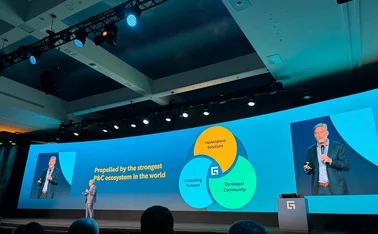
ADVERTISING FEATURE: NTT Communications

8 steps to a smooth SD-WAN transition by Ivano Rondelli, Director, Global Presales and Marketing, Network Services at NTT Communications.
Smooth SD-WAN migration in a connected world
The concern for many organizations deploying an SD-WAN is to minimize the risk of disrupting the day-to-day business operations during the migration to the new environment. Drawing on our work for numerous companies in different business fields, I’ve put together 8 tips for a frictionless SD-WAN implementation.
1. Analyze your IT estate to get “SD-WAN ready”
You need to fully comprehend your IT estate and how it all works together. This includes business applications and associated priorities, traffic patterns and flows, cloud services in use, software-as-a-service models, and how and where to connect to all of these.
2. Combining multiple poor access types does not make a good network
Simply bonding together multiple connections does not make for a quality SD-WAN implementation. If they are poorly thought out and executed, you will be very disappointed. You need to take the quality and capability of the access lines into consideration to ensure that application performance expectations are met.
3. Look at how SD-WAN will integrate into your current infrastructure
SD-WANs do not cover all of the network functionality. You will need to consider how you can integrate SD-WAN into your wider infrastructure during the design process. This analysis should include security, applications and routing protocols used in the network.
4. Ensure SD-WAN fits into your cloud strategy
Cloud connectivity is a critical issue. Ensure your SD-WAN will operate in your chosen clouds such as Microsoft Office 365 and Amazon Web Services. Some SD-WAN solutions will only provide a path to public cloud providers using a central hub-style internet breakout, others only through a local internet breakout. Also these solutions may not be optimized for either latency or performance: or support only a limited selection of cloud providers.
5. Map the connectivity flows of your applications
Mapping the connectivity flow is essential to setting up routing policies for deploying SD-WAN. Analyze your application usage and be clear on routing, bandwidth and performance requirements.
6. Use SD-WAN migration as an opportunity to update your security policies and business best practices
During the design and test phase, it is essential to test your application behavior on the network against current and future corporate security and compliance policies. SD-WAN provides a platform for you to make more use of the public internet, but it also brings risks. Using the internet could expose you to hacking or other attacks if proper protection and best security practices are not put in place or not supported by the new architecture.
7. Carefully plan your deployment
An SD-WAN isn’t simply about connecting points. An SD-WAN implementation is an intrinsic part of the business and requires greater design and planning than a traditional network. For very specific use cases, consider to run a pilot to verify any unusual scenarios – for it to be effective, keep the pilot focused and define clear evaluation criteria of the desired outcome.
8. Ensure that you get full visibility of the application performance on the network
Your SD-WAN portal should provide detailed and thorough information of the applications and application performance on your WAN. Visibility is a critical component of a solid SD-WAN architecture and it should enable you to visualize everything that goes on the network in real time and highlight issues and gaps in the architecture. A proper visibility in place ensures that your network and business go hand in hand.
If your business is looking to undertake the transition to SD-WAN, remember that at NTT Communications we offer SD-WAN that excels - we manage and take full responsibility to complete the transition to the new SD-WAN environment successfully.
Only users who have a paid subscription or are part of a corporate subscription are able to print or copy content.
To access these options, along with all other subscription benefits, please contact info@postonline.co.uk or view our subscription options here: http://subscriptions.postonline.co.uk/subscribe
You are currently unable to print this content. Please contact info@postonline.co.uk to find out more.
You are currently unable to copy this content. Please contact info@postonline.co.uk to find out more.
Copyright Infopro Digital Limited. All rights reserved.
As outlined in our terms and conditions, https://www.infopro-digital.com/terms-and-conditions/subscriptions/ (point 2.4), printing is limited to a single copy.
If you would like to purchase additional rights please email info@postonline.co.uk
Copyright Infopro Digital Limited. All rights reserved.
You may share this content using our article tools. As outlined in our terms and conditions, https://www.infopro-digital.com/terms-and-conditions/subscriptions/ (clause 2.4), an Authorised User may only make one copy of the materials for their own personal use. You must also comply with the restrictions in clause 2.5.
If you would like to purchase additional rights please email info@postonline.co.uk








